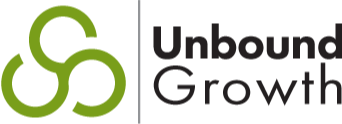.png?width=1200&height=675&name=Copy%20of%20Copy%20of%20%23BuyerFirst%20questions%20%20(1).png)
Of course, we need to have ideal customer profiles today. But how do we need them? And what do we need to include in them? Are there some questions that we need to address?
So first, let's talk about how we will use them so that you know how or what information we need to include.
Now, when most people come at me with their ideal customer profiles, they'll have a couple of pages or a slide deck with, you know, an avatar picture, Or it could be a generic picture of a couple of different people.
And then they'll have things like, you know, demographics, and maybe job title, role, responsibilities, and what their goals are.
And that's usually where it stops.
If it's a generational type of role, like a senior-level executive of a family-owned company, we can get into age ranges and generational types. Now, what that doesn't help us with is understanding how we will be able to educate a new salesperson on who our ideal customers are.
It tells you a lot about who they are, generically. But it doesn't tie into any trigger events for them:
- What is happening in the day-to-day that is a problem for them?
- And what's the impact of that problem? And how are they measured?
- What metrics do they need to be able to hit to be seen as successful in their roles?
- What's most important to them in their roles?
Different levels of the organization care about different things.
CEOs care about customer experience and shareholder value, the legacy they're leaving, and the brand image they're portraying.
In contrast, executive leadership cares about strategies and execution of those strategies and bottom line numbers because that's how they're measured.
Managers, salespeople, and customer service people are measured and focused on different things.
When creating your ideal customer profiles, are you identifying the trigger events that cause issues and problems?
Then here's the thing that's almost always missing from ideal customer profiles that drives me insane: What steps must they go through in their decision-making to purchase a solution or even recognize a problem?
- How do they recognize the problem?
- What do they call it?
- Who else do they confer with within their organizations about that?
- What kinds of conclusions do they typically come to?
- What types of gaps of information or stalls might they encounter?
- Who do they then need to go to in their organizations?
- What kind of vendors do they typically look at?
- What about the criteria that they consider?
I can go on and on.
Identifying the trigger events helps you to understand what sales approach to take and what research and data you need to do on these companies to determine who good fit companies might be, based on those trigger events.
And then, when you're looking at their buying journey or their profile of their buying journey, review:
- How it happens internally
- At what point do they bring in outside vendors?
Doing this gives you an idea at what point or what things they've already gone through, and then questions and approaches that you can ask them about how they concluded where they're at now, what options they're considering, what led them to those options and conclusions, etcetera.
So do we need ideal customer profiles today?
Absolutely, yes.
How do we use them, however? They're not just for marketing. They are a foundation for salespeople, especially if you're bringing on new salespeople. Because what happens is you bring on a new salesperson, and then you bring them into onboarding, and onboarding becomes all about me, my product, my features, and my process.
All of it is focused on: the company and the product. They start that way and then wonder why all of their customers are getting pitch-slapped from their sellers.
Because you teach them what they're going to preach to them.
So instead, start with your ideal customer profiles.
This helps to educate your salespeople and immerse them into the world of their buyers. And you can only do that if you have identified trigger events. You still need to identify roles, metrics, and industry trends. And, of course, the preferable approaches to take with these particular types of buyers for a better understanding of what they're walking into.
We're going to be doing something a little different with the buyer first to ask me anything, and I'm going to have buyers on the show with me.
That means I'm going to have a buyer come on and talk about their buying experience, what they love, what they hate, and what we can learn as a sales community how to adjust our approach and mindsets towards buyers.
And if you're a buyer who wants to share your experiences, send me a direct message because we're already lining up guests for next year.
Also, here is a quick update on the book
BE ON THE LOOKOUT FOR THE FOLLOWING:
- Our new website launch --with additional resources for you.
- Contests, games, worksheets, and downloads.
- And we're going to be doing some events. I'm already starting to line up events around the country. Hopefully, across the pond, as well.
We'll dig into some of the book's concepts and share with you some highlights before it even comes out in the fall, and we're planning a big launch.
So plans are in the works, We're having the conversations, and I can't wait to share with you all the things we've been working on. 
Christmas is coming early this year for me. So please sign up for our newsletter as well. I’ll share little bits of what we're putting into the book monthly.





